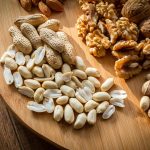
National Mole Day
Designed as a way to promote chemistry among adolescents, National Mole Day is a holiday that is celebrated annually on October 23rd from 6:02 am to 6:02 pm. It commemorates the basic measuring unit in chemistry called Avogadro’s Number—which is the number of units in one mole that equals 6.02×10^23.
Although this holiday originated in the United States, it is now observed in schools all over the world, particularly in Canada, Australia, and South Africa. It’s a day used to teach chemistry literacy worldwide.
Yes, we know that many people who discover this holiday are going to be disappointed that it doesn’t actually celebrate the small burrowing mammals known as moles, but we believe that chemistry literacy is something that’s a little bit more important to celebrate.
The History of National Mole Day
Sometime during the 1980s, a science teacher stated in an article in Science Teacher Magazine that a day should be created to celebrate the mole as a way to encourage science literacy among children. This article was read by Maurice Oehler—a retired chemistry teacher from Wisconsin—who was inspired by the article to create this non-official holiday.
He did so on May 15th, 1991, by creating the National Mole Day Foundation (NMDF). Ever since then, the NMDF has worked hard to promote this holiday around the country and the world. This holiday commemorates the hypothesis of Amedeo Avogadro. This Italian scientist was born in 1776 and is known as one of the noted pioneers of physical chemistry.
He is most known for his hypothesis, Avogadro’s Law. According to this statement, equal volumes of different gases contain an equal number of molecules under the same conditions of pressure and temperature. Although in practice, gases in real-world conditions do show minor deviations from this ideal behavior, this law is still a very useful approximation for most scientists.
Some Interesting Facts About Chemistry
Since this holiday is all about promoting an interest in chemistry and has nothing to do with small burrowing mammals, we decided to provide some interesting chemistry facts for everyone to enjoy. We hope these facts entertain and educate at the same time. We found them to be quite interesting.
Lightning Strikes Produce Ozone
Ever wonder what that “clean” smell is during thunderstorms? If you do, you’re not alone. What you’re likely smelling is ozone, which is created when lightning splits oxygen molecules into radicals that reform into ozone. Ozone has a smell that’s close to chlorine, so that’s why it has a “clean” smell to it.
The Hydrogen Atoms in Your Body Were Created Billions of Years Ago
Yep, all those hydrogen atoms are approximately 13.5 billion years old. That’s because most of the hydrogen atoms in the universe were created at the start of the Big Bang.
The Customs, Traditions, and Celebrations of National Mole Day
This holiday is celebrated in schools all over the U.S. and in some parts of the world. On this day, activities are designed by science teachers involving chemistry and the mole as a way to foster interest in chemistry.
Unfortunately, this holiday isn’t a public holiday, so no businesses, government buildings, or schools are closed. This is probably a good thing considering that schools are where this holiday is mainly observed.








